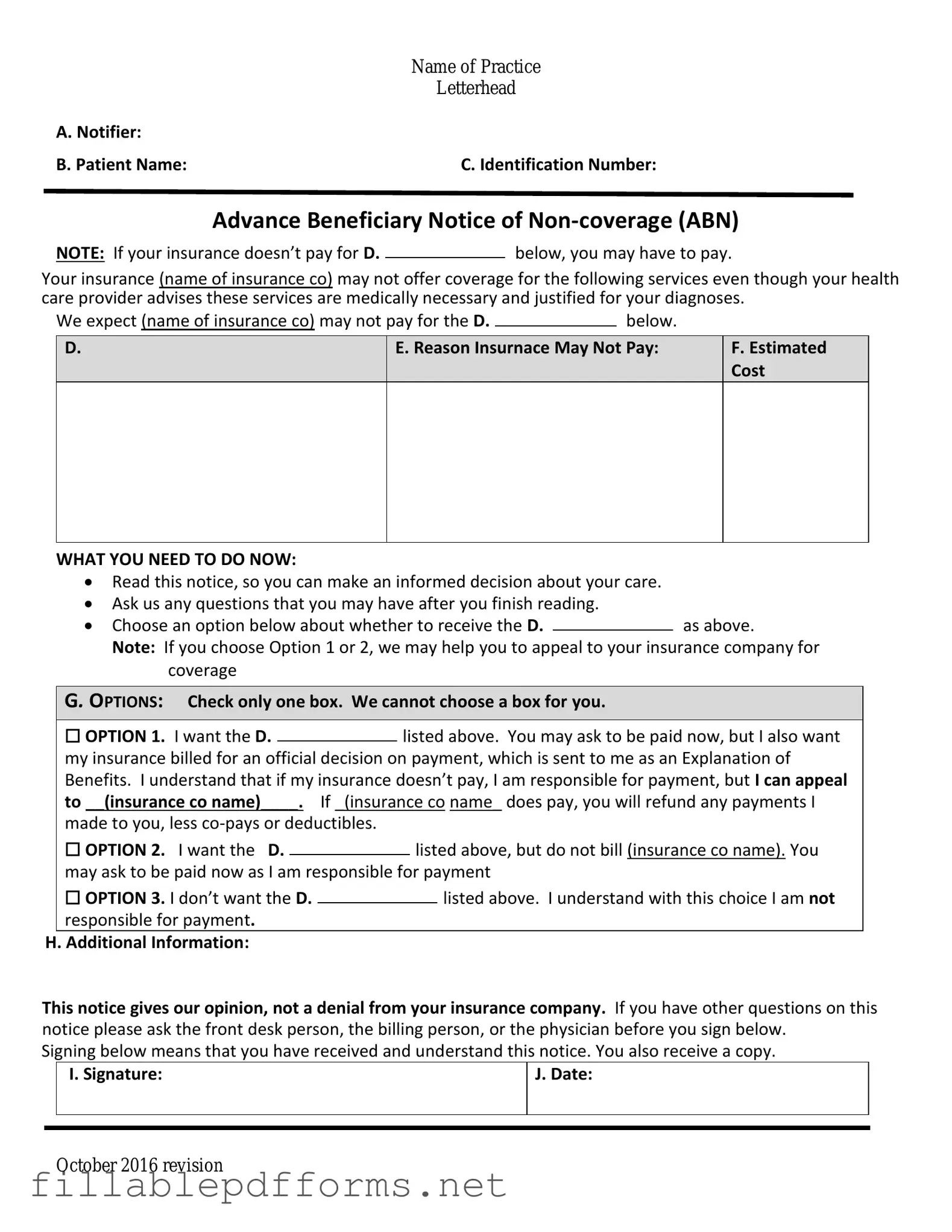Advance Beneficiary Notice of Non-coverage PDF Template
The Advance Beneficiary Notice of Non-coverage (ABN) is a crucial document that informs Medicare beneficiaries when a service or item may not be covered by Medicare. By providing this notice, healthcare providers ensure that patients are aware of potential out-of-pocket costs before receiving services. Understanding the ABN helps beneficiaries make informed decisions about their healthcare options.
Launch Editor Here
